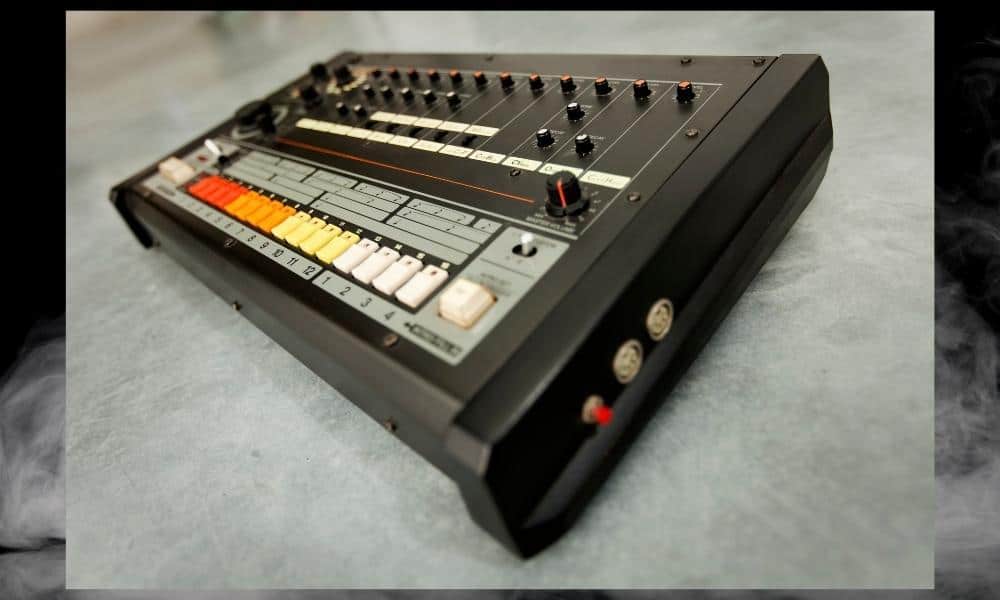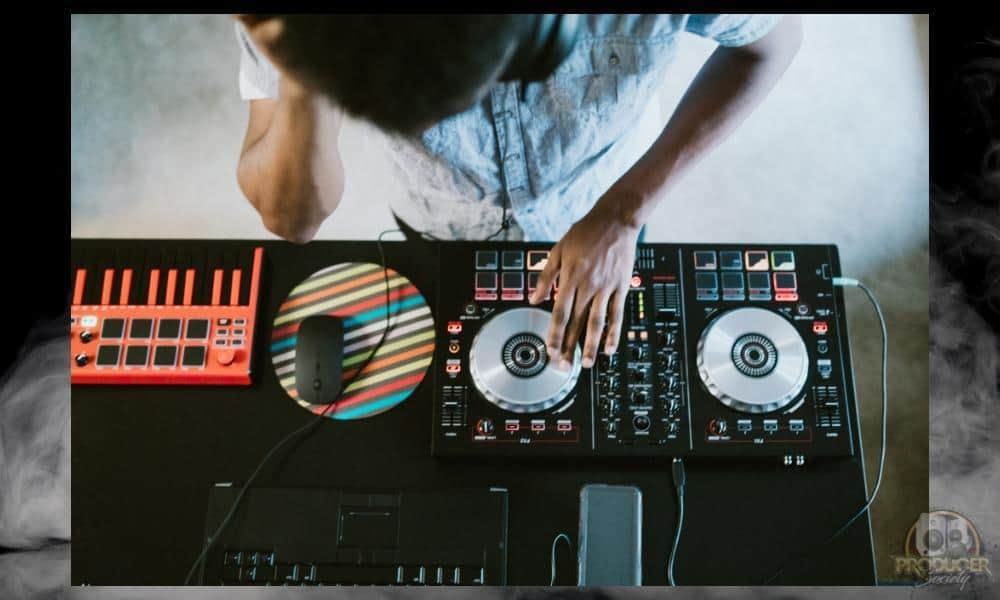I think there are a few ways to separate them from each other, but largely, one is kind of like the larger umbrella under which the other is situated. I’ll put it to you in simple terms.
The difference between vocal percussion and beatboxing is that the former is a percussive style that can be used in any genre, while beatboxing is focused on keeping time using imitations of hip-hop instrumentation. Also, vocal percussion is the larger category under which beatboxing falls.
The Main Difference Between Vocal Percussion & Beat Boxing
1) Beatboxing Focuses on Hip-Hop Instrumentation & Vocal Percussion is More Broad

Beatboxing is unique to rap and hip-hop. It gets its name from the drum machines used in 80s music that was known as beatboxes, like the famous Roland TR-808. Beatboxers imitate the sound of drum machines and DJ turntables, as well as other electronic sounds and instruments like horns.
According to this video, beatboxing was used in early hip-hop recordings to replace the drum machines that were completely unaffordable at that time. In the 1980s, Roland came out with the TR-808 and it was several thousand dollars and also a complete commercial failure.
Most musicians apparently thought of it as a toy and not a real instrument, but when hip-hop embraced it, it became an important piece of equipment.
I’ve written about the Roland TR-808 before in my guide to 808s and kicks, but in simple terms, it became so important to the development of hip-hop that it is now one of the defining elements of the genre.
These days, I don’t think there is a more influential and important piece of musical equipment than the TR-808. You can hear its sounds and sounds similar to it in all kinds of genres now, including pop, rock, country-pop, hip-hop, trap, and the list goes on. Anyway, I digress.
While it’s hard for anyone to say, I don’t think it would be unreasonable to say that many beatboxers were trying to imitate the Roland TR-808 and similar drum machines.
Vocal percussion, on the other hand, doesn’t have that association. It is much broader and less genre-specific. It is generally used to imitate percussion instruments like drum kits and other instruments.
2) Beatboxing is a Style of Vocal Percussion – Vocal Percussion Isn’t A Style of Beatboxing
As the sub-title says, beat-boxing is a style of vocal percussion. A better way of saying it is that vocal percussion is just a way of categorizing someone who is imitating drums and time-keeping instruments with their mouth.
It’s kind of like the difference between music production and mixing which I talked about here. Mixing is a specific part of music production, whereas music production can be used to mean any part of the process, including songwriting, using a DAW, etc.
Wikipedia tells us that you can hear vocal percussion in wildly different music styles, from Pink Floyd’s Syd Barrett doing vocal percussion on the track “Pow R. Toc H,” to the jazz scat vocals that can be heard in the closing bars of Nina Simone’s “Feeling Good”.
Other Differences Between Vocal Percussion and Beat Boxing

The differences between beatboxing and vocal percussion have been the subject of some debate. This is partly because they have a shared history, or rather, they are a part of a similar concept. For one, I don’t think it’s fair to say that anyone “owns” or is the progenitor of the style of percussion.
As I’ll argue in a second, we know that tribes and cultures were performing acapella and vocal percussive-like activities thousands of years ago.
If you think about it, making drum sounds with your mouth is something that almost anyone can do, unless you don’t have the ability to speak.
1) The History Of Vocal Percussion and Beat Boxing Is Different
According to The Beatboxing Project website, we can see that vocal percussion goes back centuries, as far back as the North Indian tabla bols, a type of vocal percussion that imitates tabla drums.
But it wasn’t until the late 1970s and early 1980s that the hip-hop beatboxing we know today started to develop. It made itself distinct from the vocal performances that came before.
2) Beatboxers Imitate Different Instruments

Beatboxing uses the mouth to imitate drum machines and electronic music. It can include sounds such as DJ vinyl scratching, imitating turntables, singing, and many other instruments traditionally heard in hip-hop and rap.
Vocal percussion on the other hand is usually used to imitate percussive instruments like drums. Really, you can imitate almost any sound with your mouth. But the distinction between these two terms has to do with specificity, more than anything.
3) Solo vs. Group Performances
As I mentioned earlier, vocal percussion isn’t specific to any musical genre. So, you will see vocal percussion performed in a capella groups quite often. Here, the purpose is to provide backing for the vocals. It wouldn’t be used as a solo performance.
Have a look at this video from Pentatonix, a cappella group doing some really impressive vocal percussion. That isn’t the case for beatboxers.
Most beatboxers, for instance, will usually be making the rhythm and beat for the rapper to spit bars over, although, it seems like this has changed over the last few years.
Because they are able to imitate a wide variety of sounds, there’s no reason why a beatboxer can’t create polyphonic music by performing solo – which many of them now do. This performance of “Summertime” by beatboxing champion Butterscotch shows the range of beatboxing.
4) Beatboxing is More Percussive Whereas Vocal Percussion Can Be A Mix of Melody and Percussion
When it comes to things like terminology, genres, and language, nothing is really set in stone because ideas, culture, and terminology are continuously changing.
At the current moment, beatboxing is a style of percussion that is primarily for percussion, whereas a broader vocal percussive style can be a mix of melodic instruments as well.
For instance, there are some people on YouTube as I showed earlier who can not only make the percussive sounds with their mouths but also imitate the other instruments at the same time. It’s a really impressive thing to see.
The Petebox, for example, does a really awesome cover of The Pixies’ “Where Is My Mind” where he really shows off his vocal percussion abilities while using the guitar and vocals as melodic tools.
As I said a moment ago though, these terms are merely an attempt at explaining fluid cultural and social phenomena. Anybody could come along and mix up the beat-boxing style where it’s 80% melody and 20% percussion, and people would probably still call it beatboxing.
I feel like the same thing could be said about rap, for instance, which nowadays is much closer to singing than actually rapping. Listen to 1990s hip-hop like Tupac and compare that to Drake. There is a considerable difference between the two in terms of what each artist focused on.
Rap in the 1990s was more focused on lyrics and rhythm, whereas a modern “rapper” like Drake has introduced a lot more melody into their vocal style.
With that in mind, I’m not making a value judgment on either of these styles nor am I saying one is better than the other. I’m just making an observation as a spectator.
Gear Mentioned
1) Punkademic’s Music Theory Course (with the All-Access Pass)

 Written By :
Written By :